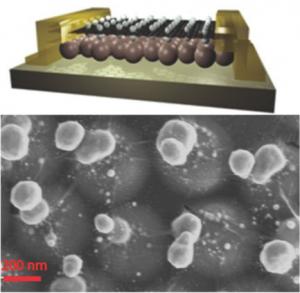| Online: | |
| Visits: | |
| Stories: |

| Story Views | |
| Now: | |
| Last Hour: | |
| Last 24 Hours: | |
| Total: | |
Graphene acts as a perfect separator in a novel light utilization device
Researchers at the Indian Institute of Science (IIS) designed a device based on graphene and metal nanoparticles that shows a significant response to light and is colour sensitive. This may be greatly beneficial for applications like ultra-sensitive photodetectors and efficient solar cells.

The scientists display a device with a large number of stacked silver nanoparticle pairs, all separated precisely by just one-third of a nanometer using graphene. All light interaction related properties are found to be enhanced in this unique device structure. The graphene acts as a perfect spacer and this produces an unprecedented field enhancement of nearly a million times in between the nanoparticles, boosting the interaction with light. As a result, the Raman signal in this device was found to be 100 times more intense. This is of significance because although graphene responds to a large range of light frequencies (colours) and has a very fast response, it does not absorb light very well by itself.
Source: http://www.graphene-info.com/graphene-acts-perfect-separator-novel-light-utilization-device



